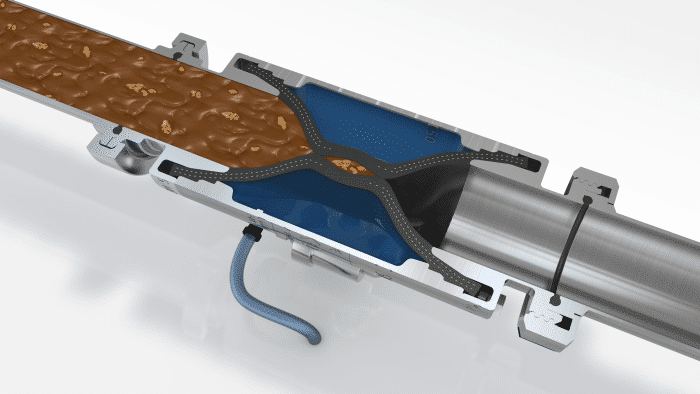
A solenoid-operated device called a Pinch Valve is used to control the flow of liquids and gasses. Fluid cannot be trapped in High quality pneumatic pinch valve since there are no dead zones or dead volumes. Only the tubing’s inside is contacted by the fluid. Compared to standard faucets, pinch valves are a more affordable option. Media can be turned on or off by using the on/off switch on the device that is connected to it. Solenoid Pinch Valves are useful for slurries and granular materials. Textile fiber and charcoal can also be made from them.
Purpose and Application of Pinch Valves:
It is possible to entirely close a flow passage by mechanically “pinching” or “pulling” a flexible tube pinch valve together. These valves do not have any cracks or moving elements in their flow path. Solenoid operated pinch valve have pliable bodies, which makes it easy for them to seal around a variety of materials. Due to the fact that Solenoid Pinch Valve are perfect for managing slurries, such as meals and medicines, pinch valves have become increasingly popular.
Control or halting the flow of abrasive, corrosive, fibrous, or granular media is done via pinch valves, also known as clamp valves. Sludge, dust, emulsions, gaseous materials, powder, and compressed air can all be isolated or controlled by this valve. Granulates and other types of materials may also reap the benefits.
Working of a Pinch Valve:
The pinch valve consists of an elastomeric rubber sleeve and end connections. A pinch bar mechanism is used to insert elastomeric tubing into the housing, where it is in direct contact with the flowing fluid. The end connectors should be screwed, bolted, or threaded to provide stability and connection.
Pinch mechanisms come in a wide variety of designs. To squeeze tubes, either a normal screw-operated device or a differential screw can be employed. Pressure from an air or hydraulic source can likewise be employed for this purpose.
The Electric pinch valve is normally open in typical situations. When air or hydraulic pressure is applied to the valve, the elastomeric rubber sleeve descends and pinches the valve. This causes the valve to shut and restricts the flow of blood. There are Solenoid Pinch Valve applications that can benefit from the usage of rubber sleeves. The flowing media and the rubber’s rebounding property entirely open the valve when the external pressure is relaxed. By allowing media to flow freely, this fully open valve keeps the valve from becoming clogged. In order to prevent contamination, only the rubber tube comes into contact with the medium.
Advantage of Pinch Valve:
This fluid can be utilized if corrosion or metal contamination of the fluid is a concern. The valve continues to open and close without interruption. Maintenance expenses are low because there are no moving parts in direct contact with the fluid in Pinch valve solenoid.
Types of Pinch Valves:
Based on the material used to build the Pinch solenoid valve, there are two types There is no metal body shell on mechanically pinched valves in the vast majority of cases. Because pinch valves have an open design, it is easy to inspect the valve body while it is in operation. A simple liner is still exposed to the elements. When viewed from the outside, enclosed Solenoid Pinch Valve resemble globe valves. The housing offers a protective shell for the liner. The metal enclosure contains the pinching mechanism.





